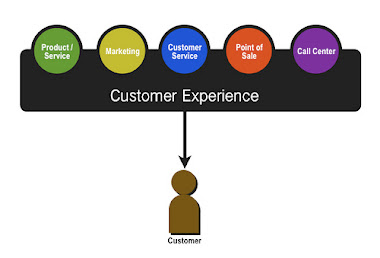Extending the Customer Experience Lifecycle
26 August 2009 by David Jacques
The challenge and immense opportunity for companies is in extending their presence in the customer experience lifecycle by providing value beyond the standard company touch-points
Customer experience is similar to the concept of customer lifecycle, in the sense that it looks at creating value at multiple channels (or touch-points). But whereas the customer lifecycle is concerned mainly on selling an individual product or service, the customer experience lifecycle is a view of all possible interactions with a company, and extends beyond the product or service.
The customer lifecycle, from marketing and CRM perspectives, describes a process through which the customer discovers and evaluates the company through marketing, selects and purchases its product or service, uses it, and maybe interacts with customer support. If the experience throughout the customer lifecycle was great and relevant, the cycle may repeat itself with loyalty.
But the customer lifecycle is a linear concept. It presumes customers will follow a pre-determined path from awareness to purchase and repeat the purchase. From a customer experience perspective, touch-points with a company can be encountered independently, in any order -and for different reasons. For example a customer might buy a product without any previous awareness of a company; another one might call a company’s customer support before even buying any of their products or services.
Recently I went to a shop of mobile phone service provider "3", to which I had just switched from another provider. I wanted information on my bill. The sales staff pointed me to a telephone tucked away in a corner labeled “Customer Hotline”. The company made the assumption that if people need post-sales service, they want to do it through the phone.
Companies that understand customer experience make efforts to convey a good and consistent customer experience at all channels, and for different purposes.
And while the customer lifecycle model is mainly concerned with the touch-points that most companies share, such as marketing, point-of-sales and call center, some touch-points are unique to specific industries. For example ATMs are specific to banking, prescriptions to medical and pharmaceutical, waybill forms to shipping, and so on. As these touch-points are designed differently even between companies of the same industry, the customer experience lifecycle research and design efforts need to be adapted to each company’s specific context.

No comments:
Post a Comment